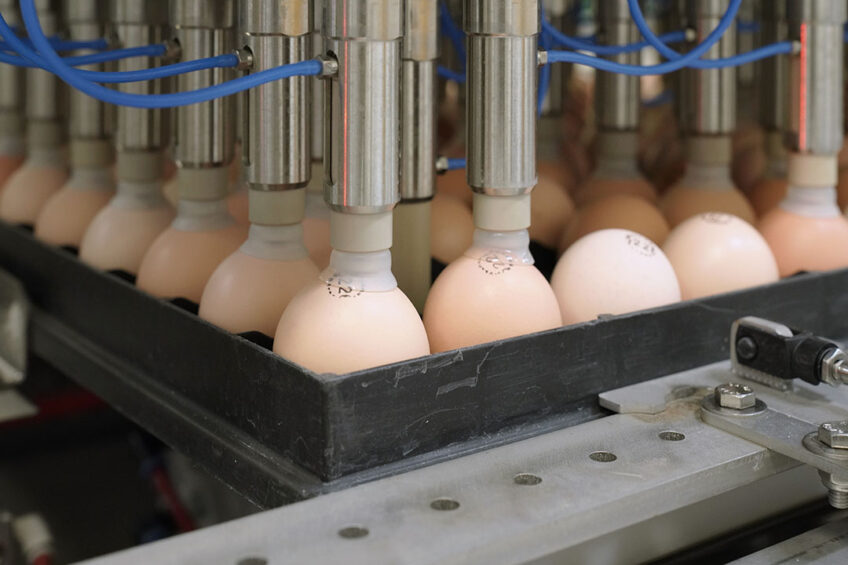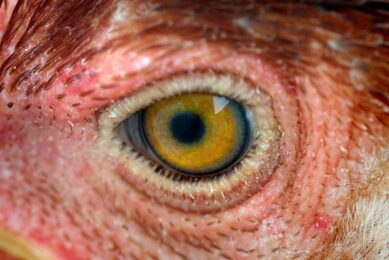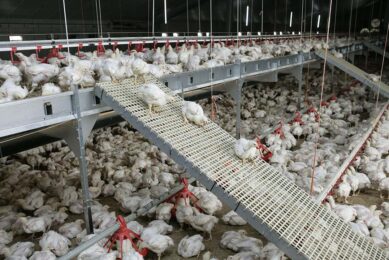In-ovo microalgae injection to improve broiler hatchability and performance

In-ovo technology is attracting attention not only in the sexing of chicks but in feeding strategies as well. A study recently published in the Italian Journal of Animal Science explored the benefits of in-ovo microalgae (Spirulina Platensis) injection on hatchability, antioxidant and immunity-related gene expression, as well as the hatchling performance of broiler chicks.
New developments in technology are constantly changing the poultry industry for the better. In-ovo technology is being adopted in several areas of poultry production, for example, in-ovo vaccination is becoming the preferred method of vaccination in several countries across the globe. In laying hen production, recent studies show that in-ovo gender determination of incubated eggs can offer a large-scale substitute to the culling of male chicks.
Most publications have attached the use of microalgae in poultry diets to their richness as s source of n-3 long chain polyunsaturated fatty acids, mainly DHA and EPA. Microalgae can also serve as protein, micro-element, vitamin and antioxidants sources, as well as pigmentation agents for skin and egg yolks. Two types stand out as valuable feed ingredients in poultry nutrition, Spirulina and Chlorella.
In-ovo microalgae injection
In this study, a total of 192 fertilised broiler breeder eggs (average egg weight 64.24 g, from a Ross 308 strain flock at 18 weeks) were divided into four groups: (1) control (without injection), (2) sham control (0.2 cc distilled water), (3) 25 mg Spirulina Platensis, and (4) 35 mg Spirulina Platensis. Microalgae injection was done using a 24-gauge syringe on day 18 of incubation into the centre of the air sac of fertile eggs, after disinfection with 70% ethyl alcohol. The temperature and relative humidity of the incubator were set at 37.5°C and 60% during the first 18 days of incubation, and at 37°C and 75% for the last three days, respectively. The hatchability of the fertile eggs was calculated for each diet group. The growth performance of the hatchlings was recorded up to day 28.
Antioxidant status and immunity
The phenol and selenium content of the microalgae as antioxidant substances was higher in the in-ovo-injected groups compared to the control, indicating improved antioxidant status of the eggs.
“Oxidative stress can reduce the viability of embryos decreasing the hatchability of fertile eggs. Several reports have shown that the activity of selenium-dependent glutathione peroxidase in the chick embryo liver increases continuously during the second part of the incubation period, with a maximum level observed at hatch time to defend against hatch stress. Besides its selenium content, Spirulina microalgae have several other antioxidant substances, such as C-phycocyanin, beta-carotene, tocopherol and chlorophyll, that have strong antioxidant properties,” the researchers noted.
It is known that several pathological (such as viral diseases) and physiological situations (like heat stress) can lead to heat shock protein production which has the potential to promote immune responses in animals. The heat shock protein family acting as chaperones are in the front line of protection against stress-induced misfolding and aggregation of polypeptides in most organisms maintaining cellular protein homeostasis.
In this study, the hepatic gene expression of heat shock proteins (HSP70) was suppressed in the microalgae groups compared to the control, indicating improved immunity. Improved immunity was also attributed to possible activation of cytokines, such as the IFN-c cytokine. In another study conducted in quails, the researchers found that in-ovo Spirulina Platensis increased hepatic IFN-c gene expression in newly-hatched quails. IFN-c is a cytokine that activates macrophages and improves T-helper 1 activity to support a cell-mediated immune response. They further noted that calcium-spirulan – which is a sulphated polysaccharide derived from Spirulina Platensis – exhibits antiviral activity that can help to improve immune responses.
Hatchability
The final days of incubation have a bigger share in the success of the hatching process: it is during this period that most bird embryos suffer heat stress due to high metabolic rates and the warm environment of the incubator. In the present study, in-ovo administration of microalgae improved the hatchability of broiler chicks in a dose-dependent manner. The inclusion of the microalgae at 35 mg showed the highest hatchability rate of 89%, followed by 87% in the 25 mg microalgae group, while the control group without the additive had about 81% hatchability. Better hatchability was attributed to the antioxidant activity of the microalgae which improved the oxidative state of the embryos during the late phase of incubation, as was observed in the upregulation of glutathione peroxidase gene expression.
Post-hatch performance
In this study in-ovo injection of the microalgae had a positive effect on hatch weight and performance (feed intake and FCR), which was more pronounced during the first week post-hatch. It was suggested that the improved growth performance was as a result of the considerably high levels of the microalgae’s long chain polyunsaturated fatty acids, mainly linolenic acid, that has the potential to convert to DHA and EPA – thereby promoting embryo growth and health status.
However, during the fourth week, it was observed that the 35 mg/egg inclusion level had adverse effects on growth performance compared to the control, although no difference in performance was observed between the control and the 25 mg level group. “As we did not see any significant effect on growth traits up to the third week post-hatch, the adverse effect on FCR of the broilers during the fourth week of the experiment maybe related to housing management factors,” they concluded.
Process sanitation is crucial
It was concluded that in-ovo injection of Spirulina platensis improves hatchability, antioxidant status, immunity-related gene expression and performance in broiler chicks. The microalgae also has positive effects on heat tolerance of broiler embryos during last days of incubation. Spirulina Platensis is a potentially functional organic supplement that can be used in commercial hatcheries to improve hatchability and the health status of hatchlings.
The inclusion level of 25 mg of Spirulina Platensis shows better growth performance of broiler hatchlings while 35 mg gives better levels of immunity and hatchability. In-ovo injection is sensitive to contamination which can influence hatchability due to possible embryo contamination. With this in mind, the incubation and in-ovo injection processes need to be conducted under maximum hygiene conditions and following specific procedures to keep possible contamination under control.
Join 31,000+ subscribers
Subscribe to our newsletter to stay updated about all the need-to-know content in the poultry sector, three times a week. Beheer
Beheer








 WP Admin
WP Admin  Bewerk bericht
Bewerk bericht